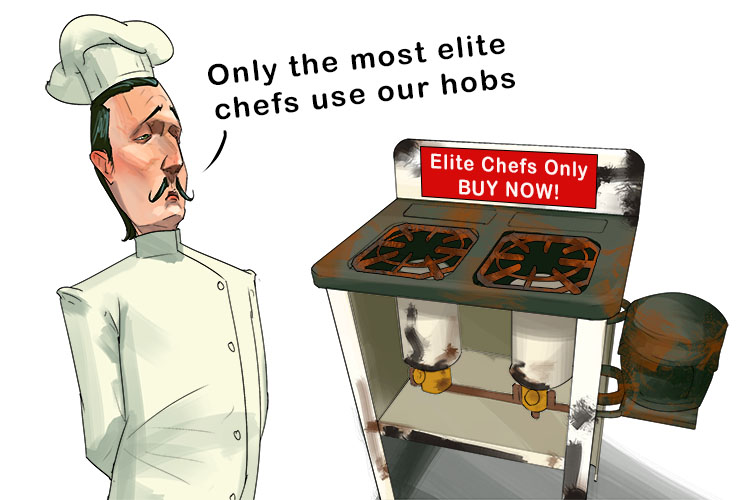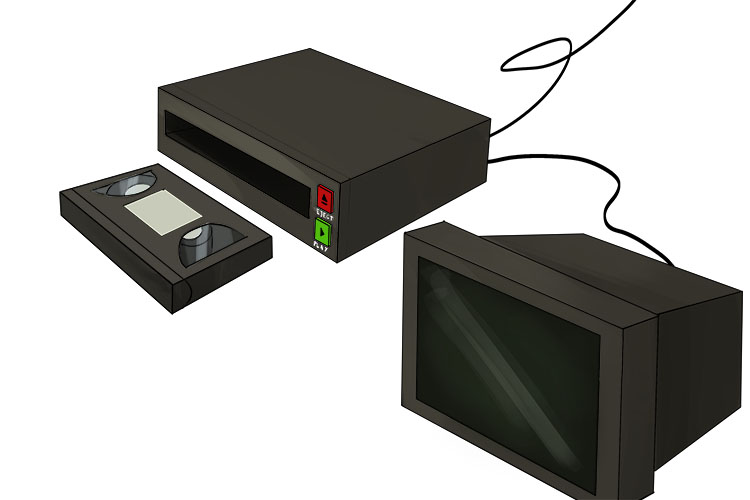obsolete – a product which is out of date and no longer used or needed; a product that loses its useability
(Pronounced ob-suh-leet)
To remember what obsolete means use the following mnemonic:
It said the hob's for elite (obsolete) chefs only, but it seems out of date to me.

In business, obsolete refers to a product, service, or technology that is no longer in use or no longer useful. This can be due to a number of factors, such as the introduction of a newer, better product or service, or changes in the market. Obsolete products and services can be a liability for businesses. These products can take up valuable resources and space while returning very little.
Here are some reasons why a product or service might become obsolete:
- Regulations: Changes in regulations may make older products or services illegal to sell or use.
A prime example of regulations making a product obsolete is Asbestos. Asbestos has excellent thermal properties and so was very popular for use in home insulation all the way until the latter half of the twentieth century. However, once it was discovered that breathing in asbestos fibres causes irreparable lung damage, products containing the substance were banned from use. Other insulation products had to be developed to capture the vacant market share that was left.
- Changing market needs: The needs of customers may change over time.
An example of this is New Coke. In 1985 the Coca Cola Corporation introduced New Coke as a replacement for their original formula. This was done to counteract the rise in market share of competing brands such as Pepsi. However, changing market desires led to consumers demanding the original Coca Cola flavour back, and with demand dwindling, Coca Cola were forced to discontinue New Coke and reintroduce the original formula.
- Technological advancements: Newer products or services that are more efficient, effective, or user friendly may make older products or services obsolete
An example can be seen with the VHS video system. This was a magnetic tape video recording system that you could play pre-recorded films on. New technology came along in the form of DVD or digital video disc. The size at 12cm in diameter and 1.2mm thick made them a lot smaller. DVDs could also store four times the data and could therefore offer extra features such as bloopers and deleted scenes. Digital menus meant that you could immediately click to any highlight you like and didn’t have to rewind the film before viewing again like VHS. The DVD was the new technology that wiped out VHS tape cassettes, making them obsolete. Technology moves very quickly, and now DVDs are becoming obsolete themselves due to the introduction and rise of online streaming services.

- Depreciation: The value of older products can depreciate over time, making them no longer worth selling.
When food goes out of its best before date, it loses the majority of value. Although it is not illegal to sell food after the best before date has passed (unlike the ‘use by’ date), most consumers will not want to buy it. For many large retailers, this depreciation means that it’s no longer financially viable to pay for the storage and sale of these goods and so will therefore throw them away.
A specific example of a company throwing away products when they become financially unviable to retail is video game company Atari. In 1982, a sharp downturn in video game sales put huge financial strain on the company, who had recently developed some very poorly received games that were not selling well. Distributors returned unwanted stock to Atari, who ended up with a huge quantity of unsellable game cartridges. Atari decided to bury a large number of them in the Arizona desert, estimated to approximately 700,000 games, mostly made up of their failed E.T The Extra-Terrestrial game.
When a product becomes obsolete, businesses should consider the following options:
- Dispose of the item: This may be the best option if the item is no longer useful or if it is a liability.
- Repurpose the item: The item may be able to be used for a different purpose, such as parts for a new product.
- Sell the item: The item may be able to be sold to a salvage company or to a collector.
The best option for a business will depend on the specific circumstances. However, it is important to take steps to identify and remove obsolete items from inventory to avoid unnecessary costs and liabilities.
Businesses can avoid producing or selling obsolete products and services by:
- Staying up-to-date on industry trends: Businesses should keep an eye on new products and services that are being introduced to the market. This will help them to identify ones that may make their own products or services obsolete.
- Monitor customer feedback: Businesses should regularly collect feedback from customers to understand their needs and expectations. This will help them to identify products or services that are no longer meeting customer needs.
- Conduct regular inventory reviews: Businesses should regularly review their stock and the services they provide to identify obsolete products. This will help a business to repurpose or dispose of them before they become a liability.




